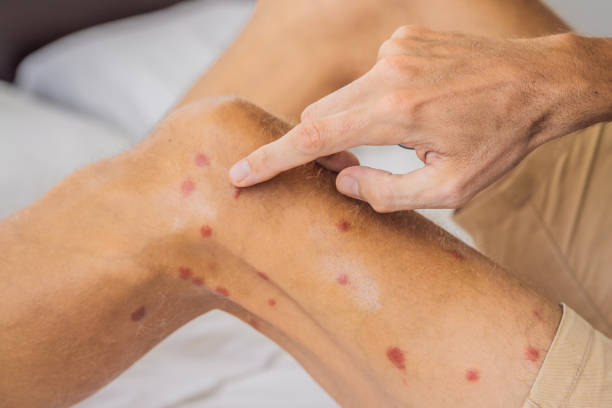Sand fly bites are a common concern, especially in regions where these tiny insects thrive. Understanding their behavior, the risks associated, and effective prevention methods is crucial for minimizing the chances of being bitten and dealing with potential consequences.
Understanding Sand Flies
Appearance and Habitat
Sand flies are small, measuring only about 1/8 to 1/4 inch in length, and are often found in sandy or marshy areas. They are most active during dawn and dusk and are prevalent in tropical and subtropical regions worldwide.
Behavior and Feeding Habits
These nocturnal insects feed on the blood of mammals, including humans, and are known vectors for various diseases, including Leishmaniasis. They are attracted to carbon dioxide, body heat, and certain odors their hosts emit.
Risk Factors Associated with Sand Fly Bites
Geographical Distribution
Sand flies are found in regions spanning from Southern Europe and Africa to Asia and the Americas. Countries with warm climates and poor sanitation are particularly prone to sand fly infestations.
Peak Activity Times
The activity of sand flies peaks during warmer months, especially in the evenings and at night. Travelers to endemic areas should take extra precautions during these times to avoid being bitten.
Signs and Symptoms of Sand Fly Bites
Immediate Reactions
Immediately after being bitten by a sand fly, individuals may experience pain, itching, redness, and swelling at the bite site. These symptoms usually subside within a few days.
Delayed Reactions
In some cases, individuals may develop more severe reactions to sand fly bites, such as fever, headache, body aches, and fatigue. These symptoms may indicate an allergic reaction or the transmission of a disease.
Prevention and Protection Against Sand Fly Bites
Environmental Measures
Reducing the presence of sand flies around living areas can be achieved by eliminating standing water, keeping vegetation trimmed, and using insecticides.
Personal Protective Measures
Wearing long-sleeved shirts and pants and applying insect repellents containing DEET or picaridin can significantly reduce the risk of sand fly bites. Additionally, using bed nets treated with insecticides can protect while sleeping.
Treatment for Sand Fly Bites
Home Remedies
Applying cold compresses, topical antihistamines, or hydrocortisone cream can help alleviate itching and discomfort caused by sand fly bites. Keeping the affected area clean and avoiding scratching is essential to prevent infection.
Medical Treatment Options
In cases of severe allergic reactions or suspected transmission of diseases like Leishmaniasis, seeking medical attention is crucial. Physicians may prescribe antiparasitic medications or antibiotics depending on the diagnosis.
Complications Arising from Sand Fly Bites
While most sandfly bites resolve without complications, individuals with weakened immune systems or pre-existing health conditions may experience more severe outcomes, including secondary infections or systemic diseases.
Myths and Misconceptions about Sand Fly Bites
There are several misconceptions surrounding sand fly bites, including the belief that they only occur in rural areas or that they are harmless. Understanding the true risks associated with sand flies is essential for taking appropriate preventive measures.
Conclusion
In conclusion, sandfly bites pose a significant health concern in many parts of the world, particularly in warm and humid climates. By understanding the behavior of sand flies, recognizing the signs and symptoms of bites, and implementing effective prevention strategies, individuals can minimize the risk of being bitten and mitigate potential complications.
